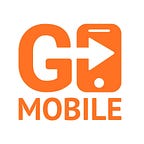How Go Mobile and Domino’s Pizza Tested Predictive Media Buying
Most companies want to get profitable users. Domino’s Pizza also had such a goal. To achieve it, we offered to test Go Predicts, our own technology for buying traffic based on predictive events. Read our article to learn about the launch process and the results of the campaign for Domino’s Pizza.
Domino’s Pizza is an international pizza delivery brand that we have been working with since 2019. For three years, we have conducted advertising campaigns on various channels: Google and Facebook, in-app networks, and in our DSP Go NET.
In 2021, we presented our Go Predicts technology to the company, explained how the predictive model works, and offered to test it. You can read more about predictive marketing and Go Predicts work in our article.
This approach would allow us to determine in advance the most efficient audience and attract it to the app of the brand. Domino’s Pizza agreed, and we got to work.
Tasks
The main goals were to attract effective traffic to the Domino’s Pizza app and optimize the CPA.
With the help of a predictive model, the brand wanted to to increase the LTV of users. That is, to increase the profit that the business receives for all the time working with the client. To do this, we needed to attract users who would make purchases more often and for a larger average bill.
We also tracked the Cost Revenue Ratio (CRR) — the ratio of advertising expenses to revenue from this advertising. This indicator reflects the effectiveness of a campaign with a predictive model and shows how well we are working on optimizing CPA and increasing LTV.
Setting progress
Before launching the predictive model, we needed to accumulate a number of events in AppsFlyer sufficient for the analysis. We had 30,000 installs, and at least 40% of them reached the purchase. Such a huge volume made it possible to generate audience segments with greater accuracy.
At the preparatory stage, the brand provided us with the raw user data via the Push API to train the model. We worked only with AppsFlyer ID to preserve the privacy of Domino’s Pizza users. This step is very important, because the model trains much faster with the historical data. It’s a safe and effective way to show the model what kind of audience to attract.
After that, we moved on to clustering the audience by LTV and deep metrics. One cluster is users within a specific LTV, for example, 1000–2000 rubles. We have divided the audience into 8–10 clusters to set benchmarks by segment based on users’ profitability.
Soon the model was ready, and we launched a test advertising campaign with Smart Event optimization.
A Smart Event is a synthetic in-app event that advertising networks can use as regular events from the user. The only difference is that a Smart Event is a prediction of the value of a particular user based on his behavior.
Smart Events were sent via AppsFlyer to Go Predicts. The model analyzed the behavior of a new user and predicted the metric we needed — LTV. The system sent events back to AppsFlyer — thanks to this, the campaign was optimized.
The test period results allowed updating campaign settings and enriching Smart Event with additional information. For example, we switched from an open cluster with LTV 600+ rubles to a closed one with LTV 1000–2000 rubles. It made it easier for the model to find the right users, learn faster, and for us to set up bids in the campaign.
After a couple of weeks, predictive campaigns have begun to bring the first positive results — the number of orders has increased, revenue has grown, CRR and CPA have decreased.
The tests were successful, so we moved on to the next stage. We determined the optimal Smart Event in terms of user volume and perfect conversions — with an LTV of 1000–2000 rubles — and began to scale effective traffic.
Results
By February 2022, predictive advertising campaigns accounted for 70% of Google traffic, and at the start, they were 15–20%. After optimizing Smart Event campaigns, their CRR became lower than the CRR of the conventional ones — the difference was 25%. It means spending money on predictive advertising campaigns was more effective.
The positive results of the Smart Event campaigns made it possible to revise the budget split. From October to February, we increased the budget of predictive campaigns by four times and, at the same time, reduced the share for regular promotion.
Also, according to predictive campaigns, the indicator of the CPO — the cost of attracting one customer who made an order — decreased by 23%. This means that users attracted by predictive campaigns made purchases several times more often — purchases increased while the advertising spent stayed the same.
Why do predictive campaigns produce good results?
The predictive model of Go Predicts made it possible to focus on the long-term value of the user, accurately predict his characteristics, and quickly train advertising campaigns to attract the most profitable and relevant audience.
Other advantages of the predictive model:
- Setting up campaigns doesn’t require any effort from the client. Except transferring the historical data you don’t have to do anything.
- You don’t work blindly. You focus not on the initial user action but immediately on the long-term value that the new user will bring.
- With machine learning, you get deeper insights from the data than with manual processing. During the training, the model builds a lot of complex nonlinear correlations inside, which allows you to quickly and accurately predict the needed characteristics of the audience.
- You pay only for the most profitable users. Advertising campaigns are quickly trained to attract those clients who pay off faster.
